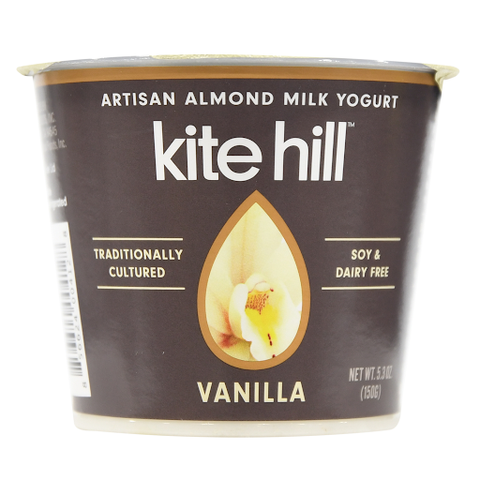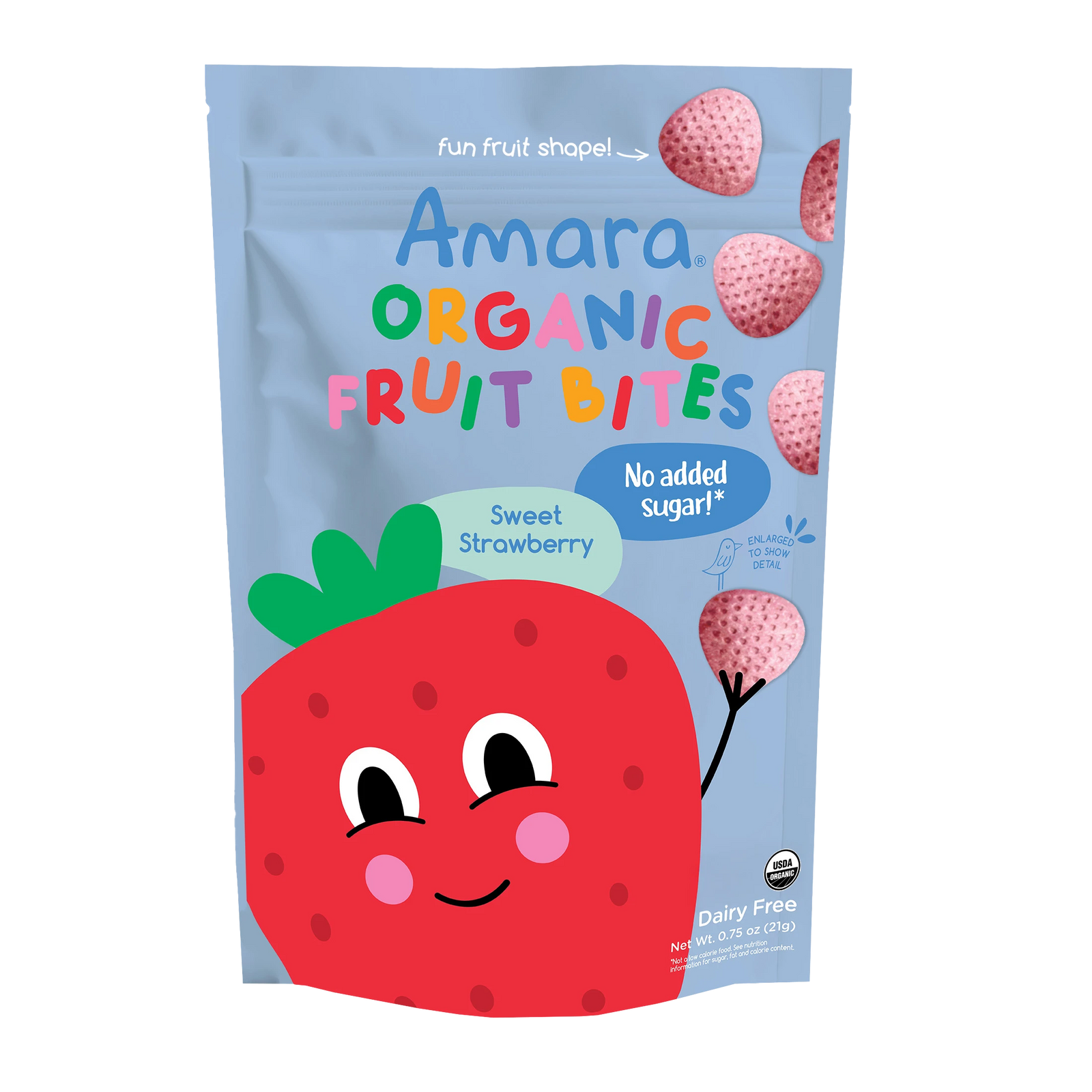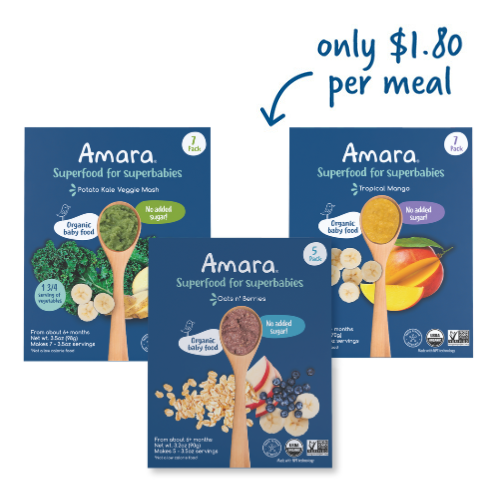
Help! My toddler is dairy-free. What about yogurt?
If your toddler is dairy-free, you may feel locked out of some classic toddler snack options — especially those that include yogurt. But that's not the case! Non-dairy, plant-based yogurt has come a long way since it first hit the market, and we're here for it!
Read on to learn more about:
- Non-dairy yogurt options
- Non-dairy yogurt product picks
- DIY dairy-free yogurt
- Dairy-free yogurt snacks and recipes

Non-dairy Yogurt Options
With more Americans following a plant-based diet in recent years, the demand for dairy-free products has really exploded. Along with the proliferation of numerous dairy-free milk alternatives, there are now almost as many dairy-free yogurts available to choose from.
Generally speaking, most of these are really wonderful alternatives to traditional cow’s milk yogurts. Dairy-free yogurts contain healthy, plant-based fats and also are full of probiotics — the living cultures that make “regular yogurt” so beneficial for the gut microbiome. Here are the major differences to know between different types of dairy-free yogurts:
Almond milk yogurt: Yogurt made with almond milk has a naturally low sugar content and also contains a good amount of fiber and healthy fats. It tends to have a lower protein content compared to cow’s milk yogurt and little to no calcium (unless it’s fortified, which many almond milk yogurts are).
Soy milk yogurt: From a nutritional perspective, soy milk yogurt is the most comparable to dairy yogurt. (This is also true of soy milk: because soy is a complete protein that contains all the essential amino acids, soy milk more closely mirrors the nutritional composition of cow’s milk compared to other plant-based milk alternatives). Soy milk yogurts usually have the highest protein content in the dairy-free yogurt department; they are high in fiber but low in calcium (unless they are fortified). Most soy milk yogurts have a very nice texture/consistency that’s similar to dairy yogurt.
Coconut milk yogurt: Coconut milk yogurts typically have a higher calorie count than dairy yogurt (all the more so if the base is coconut cream, vs. coconut milk), and much lower protein content. The fat content (saturated and unsaturated) is generally high, and coconut milk yogurts often have more fiber than other plant-based yogurt options. Because coconut milk is one of the richest/thickest dairy-free milk choices, coconut yogurts are often on the creamy side as well.
Oat milk yogurt: Oat milk yogurt is newer to the market (just like oat milk!), so it may not be available everywhere — it tends to be higher in calories and much lower in protein than cow’s milk yogurt, but it usually has a fantastic, creamy consistency.
Cashew milk yogurt: There are a few yogurts made from cashew milk, and these generally are low in sugar, low in calcium, and very low in protein. They also have a slightly thinner texture compared to yogurts made from other nut milks.

Non-Dairy Yogurt Product Picks
In the same way that searching for a plant-based milk has become quite the undertaking, the dairy-free yogurt aisle can be difficult to navigate at first. Here are our best tips on how to choose a dairy-free yogurt, and a few of our favorites:
- Check the nutrition label for added sugar content:Yogurt — whether it’s cow’s milk or dairy-free — is one product where we often see TONS of added sugars. (*This is especially true in yogurt products marketed for young children, which is just atrocious…) For the most part, flavored yogurts are sweetened to excess with added sugars — try to select a product with as little added sugar (or none!) as possible. Products labeled as “unsweetened” or “plain” are often safe picks, but you should always check to be sure. If you opt for unsweetened/unflavored dairy-free yogurt, you can always sweeten or flavor these to taste at home with a drizzle of honey, fruit, fruit compote, or vanilla beans.
- Look for fewer ingredients: Because plant-based milks are structurally different from cow’s milk, many dairy-free yogurts contain thickening agents, additives, and other binding agents to try to more closely mirror the texture and consistency of dairy yogurts. We suggest opting for a product with fewer ingredients for health purposes. Some dairy-free yogurts are fortified with calcium, vitamin D, or other nutrients that plant-based yogurts are usually lacking.
- Try different options: You may find that your favorite plant-based milk alternative is also the base for your favorite plant-based yogurt (i.e., if you prefer soy milk, you may also prefer soy milk yogurt) — but you’d be surprised how many people actually prefer a different plant-based milk as their yogurt base. Every option has a different texture and mouthfeel (including across brands), so you may want to try some different varieties to see what you like best.
- Buy in bulk: Once you’ve honed in on your favorite dairy-free yogurt, it tends to be more economical to buy a larger-sized tub than individual single-serving cups.
Here are some crowd favorites in the dairy-free yogurt aisle:
So Delicious Dairy Free Yogurt Alternative (coconut milk)

Daiya Yogurt Alternative (coconut cream)

Forager Project Organic Dairy-free Yogurt Alternative (cashew milk)

Silk Dairy-Free Yogurt Alternative (soy milk)

Kite Hill Artisan Almond Milk Yogurt (also comes in greek style)

Nancy’s Probiotic Non-Dairy Yogurt (oat milk)

DIY: How to Make Non-Dairy Yogurt at Home

Making dairy-free yogurt at home is simpler than you may think — all you need is a few ingredients and a little time. Here’s the run-down:
1. Pick Your Milk
You can choose to make yogurt with any kind of dairy-free milk. If you’re just getting started, we recommend coconut milk as it’s the creamiest base, but feel free to opt for cashew, soy or almond if you prefer.*Remember to try to use a base with the least number of ingredients (& no added sugar!).
2. Add a Thickening Agent (optional)
Adding a small amount of a thickening agent such as cornstarch, arrowroot powder, tapioca starch, or agar agar can really smooth out your yogurt’s texture — but you can leave it out altogether if you want.
3. Add Probiotics/Live Cultures
If you have probiotics at home (the capsule kind, with powder inside), you can just break those open and sprinkle in the powder. Otherwise, you can select any probiotic powder or liquid to add in; and you can also use a live culture starter.Tip: If you’re using probiotics, make sure they do not contain prebiotics.
4. Let it Ferment
Next, you’ll cover your mixture and leave it somewhere warm and dark (such as inside your oven with the light turned on or in an instant pot on the yogurt setting — *the temperature range should be ~85-115 degrees Fahrenheit) for 12-24 hours.
5. Chill & Enjoy!
For specific recipes with precise measurements and directions, our two fave recipes areHomemade Nondairy Yogurt from the New York Times Cooking section and The Kitchn’sDairy-Free Coconut Yogurt.
Non-dairy Yogurt Snacks and Recipes
There are so many fun ways to serve yogurt that aren’t just “here’s some yogurt.” Case in point: my children don’t much enjoy plain yogurt, but there are numerous snacks and sides they love that feature yogurt. And since yogurt — whether it’s cow’s-milk-based or dairy-free — is such a healthy, filling food, I love working it into their diet as much as possible. Here are our favorite ways to serve dairy-free yogurt to kids:

This is so easy to make it’s actually ridiculous: you simply blend dairy-free yogurt with frozen fruit (may we suggest strawberries?) and a drizzle of honey (sweetened to taste) — you can either serve it up right away or freeze it in a sealed container to save for a sunny afternoon.
*Also — you can easily adapt this recipe to make popsicles(!) by pouring your blended “fro-yo” into popsicle molds and freezing them for 2-4 hours.
Many recipes use yogurt as a base for dips and spreads you can smear on multi-grain bread or crackers or use for dunking — we love this dairy-free tzatziki recipe from Minimalist Baker and this trio of yogurt dips (spinach basil, ranch hummus, and thai peanut) from Babyfoode.
Another simple, no-frills option that kids LOVE is to combine 1 cup of plain dairy-free yogurt with 2 tablespoons syrup or honey and ½ teaspoon cinnamon (also optional to add ⅛ teaspoon ground nutmeg) — this dip pairs wonderfully with pretzels, crackers, fresh fruit, or dried fruit.
OK, one more! To make an even more hearty fruit dip, combine 1 cup vanilla dairy-free yogurt with ~2 tablespoons honey and ~¾ cup peanut butter — this filling, protein-rich dip transforms a simple fruit snack into a well-rounded “mini meal.”
Another super-easy recipe that’s perfect for afternoon snack time, this frozen yogurt berry bark is a slam dunk. All you have to do is spread dairy-free yogurt on a lined baking sheet and top with a drizzle of honey and mixed berries, then put it in the freezer until frozen. *Optional toppings also include crumbled nuts and dairy-free chocolate morsels, yum!
Smoothies are another great way to include yogurt in your child’s diet — there are tons of recipes and recipe round-ups online, but at the most basic level all you need to do is combine dairy-free milk, dairy-free yogurt, and fruit (and/or veggies!) in a blender. When I make smoothies, I also typically add nut butter, and sometimes I top it off with a dash of cinnamon or a drizzle of honey. You can play with the texture to make your smoothie thinner (more dairy-free milk) for drinking or thicker (less dairy-free milk) for eating with a spoon.
Amara’s organic dairy-free yogurt melts are a fun, easy snack that’s perfect for having at home or taking on-the-go. They’re brightly colored, delicious, convenient,andthey’re actually healthy! With no added sugar and 100% organic ingredients, these are the healthiest plant-based toddler yogurt melts on the market — try mango carrot, carrot raspberry, or a combo pack!








Leave A Comment